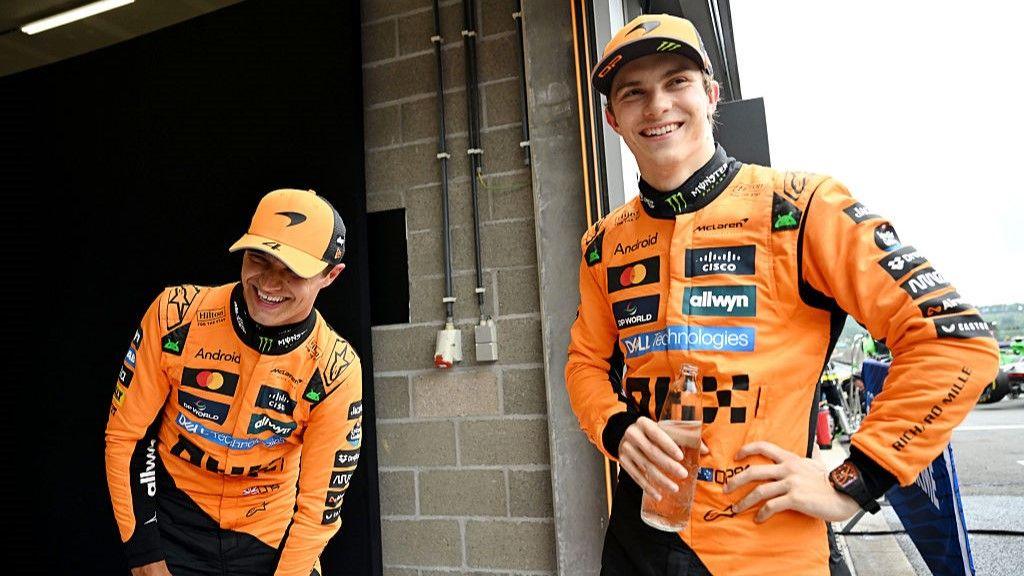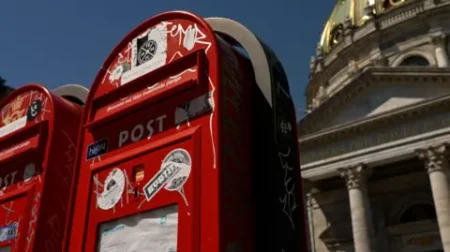In a gripping display of skill and strategy, Oscar Piastri clinched the victory at the Belgian Grand Prix, showcasing the fine margins that delineate the ongoing battle for the Formula 1 World Championship within McLaren. Piastri’s success was particularly noteworthy as it came after two consecutive wins by his teammate, Lando Norris, thus reigniting the competition between the two talented drivers.
Having arrived at the iconic Spa-Francorchamps circuit with momentum from previous races—Norris’ impressive win in Austria and a contentious finish at Silverstone where Piastri faced penalties—the stakes were notably high. The situation evolved rapidly, with both drivers claiming pole positions, Norris leading the main race and Piastri dominating the sprint. Notably, the patterns in qualifying performance set the stage for a tense showdown on race day.
Throughout the race, the balance of power swung dramatically between the two teammates. Piastri managed to take the lead during a carefully navigated start, demonstrating his bravery through the Eau Rouge sector, which proved pivotal as he secured his position against Norris, who admitted to being overtaken through a combination of Piastri’s skill and his own strategic miscalculation. This initial overtake was underscored by Piastri’s deft control over his medium-compound tyres, allowing him to maintain his lead despite the closing gap between him and Norris, who utilized harder tyres towards the end of the race.
However, Norris reflected on the missed opportunities in his race strategy, acknowledging that he “couldn’t have won” but could have improved his chances with different choices during the wheel-to-wheel competition. His admission about a shaky start illuminated how quickly fortunes can change in Formula 1, especially in a high-stakes environment such as Spa where even small errors can lead to significant time loss.
Reflecting on the start of the race, it became clear how crucial this phase can be. Piastri had previously demonstrated vulnerability while holding the pole. His experience from the sprint race highlighted the challenges faced at Spa, where the recent history of overtaking and positioning weighed heavy on drivers. McLaren’s team principal, Andrea Stella, pointed out that Piastri’s ability to take the lead during the opening lap mirrored his previous lessons learned, showcasing the progression of both Piastri and Norris in their roles.
As the race pushed on, the pit stop strategies unfolded interestingly. Piastri, leveraging his position as the race leader, opted for medium tyres early on, while Norris, who followed later for hard tyres, allowed Piastri to build a substantial lead. Ollifting this lead became more difficult for Norris, who, subsequent to a slower pit stop, found himself trailing significantly as he rejoined the race. Norris later expressed the challenge of covering the gap, effectively admitting that his performance had been hindered by successive minor errors unveiling the complexities of what may appear straightforward.
The post-race analysis reflected on the possibility of errors during pursuit, but in the context of Spa’s difficult overtaking conditions, the task of closing the gap was fraught with challenges. Both drivers came away with lessons; the role of execution at critical junctions was emphasized, and both the strategic decisions made and the consequent driving required were highlighted as integral to the outcome of the race.
Looking ahead, as the championship race continues toward Hungary, where Piastri had achieved his maiden victory, the competition between the two teammates similarly strives for minimal errors and maximized execution. The praise from Stella, who noted the high caliber of both drivers’ performances, set the narrative that every choice, down to pit strategies and driving execution, will be essential in determining the champion. Both Piastri and Norris, though rivals within the same team, exemplify the spirit and precision that characterizes Formula 1 racing and resonates with every fan of the sport.
As the dialogue around race strategies, safety protocols, and driver performances evolves, the insights drawn from Spa affirm just how critical adaptability and decision-making are in the hunt for the prestigious title.












